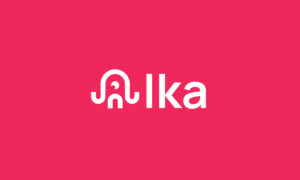Web 2.0 backlinks.
Some SEOs swear by them. Others say they’re dead.
So what’s the truth?
Here’s the deal: Web 2.0 backlinks are one of the oldest link-building tactics out there. And while they don’t have the same power they did in 2010, they can still play a role in your SEO strategy… if you know how to use them.
In this guide, I’ll show you exactly what Web 2.0 backlinks are, how they work, and whether they’re worth your time in 2025.
If you’re looking for a shortcut, here’s a free updated list of high-DA Web 2.0 sites you can use right now.
What are Web 2.0 backlinks?
In simple terms: a Web 2.0 backlink is a link you build on a user-generated content platform.
Think Medium, Blogger, WordPress.com, Tumblr, Wix.
These platforms let anyone sign up, create a site or blog, and publish content. And inside that content, you can drop a link back to your website. That link = a Web 2.0 backlink.
Here’s a quick example:
- You start a free blog on WordPress.com.
- You write a post about “SEO tips for small businesses.”
- You add a link in that post pointing to your service page.
That’s it. You just built a Web 2.0 backlink.
The idea is simple: leverage the authority of these big platforms to pass link equity back to your site.
How Web 2.0 backlinks work
Here’s the simple version:
You create a new blog on a Web 2.0 platform → publish content → add a link to your site.
Because these platforms already have high domain authority, the links you place there can sometimes get picked up and indexed faster than links on a random new site.
That’s why people use them: they’re free, easy, and give you full control over the anchor text.
But there’s a catch.
If your Web 2.0 blog looks like thin, spammy content, Google will ignore it. Or worse, the platform will delete it.
That’s why the smart way to use Web 2.0 backlinks is to treat each property like a mini site:
- Real articles (800+ words, unique, formatted)
- Relevant topics in your niche
- Links out to authority sources, not just your own site
Do this, and your Web 2.0 backlinks can actually help strengthen your link profile instead of looking like a cheap trick.
Why SEOs still use them
So, if Web 2.0 backlinks aren’t as powerful as they used to be… why do people still bother?
Three reasons.
- They’re free.
No outreach. No budget. Just create an account and you’re live. - Full control.
You pick the anchor text. You decide where the link points. You can even build entire networks of Web 2.0s if you want. - Link diversity.
Google doesn’t want to see only guest posts or niche edits in your backlink profile. Web 2.0s add variety, branded links, partial matches, and even tiered link building (pointing links to your other backlinks).
That’s why even in 2025, smart SEOs still sprinkle them into campaigns. Not as the main strategy… but as a supporting layer.
Do Web 2.0 backlinks still work in 2025?
Short answer: yes… but not like before.
Back in the day, you could spin up a dozen Web 2.0 blogs, drop exact-match anchors everywhere, and rank almost anything.
That doesn’t fly anymore.
Today, Google looks at quality and context. If your Web 2.0 site is just three spun articles and a pile of outbound links, it won’t pass value.
But… when you treat them right, they can still work. Here’s how:
- Build out your Web 2.0 like a real mini-site (think branding, multiple posts, internal links).
- Keep your anchors natural (branded, partial match, generic).
- Use them as support links, either to your money pages or to strengthen other backlinks you’ve built.
Are Web 2.0 backlinks going to outrank authority sites? No way.
But can they help diversify your profile, boost indexing, and give you an extra edge? Absolutely.
Best practices for creating Web 2.0 backlinks
Here’s the truth: most people build Web 2.0 backlinks the wrong way. They throw up a thin, 200-word post with a link and call it a day. Google ignores that stuff.
If you want your Web 2.0s to actually help your rankings, here’s what to do:
- Write real content.
At least 800–1000 words. Add headings, images, and formatting. Treat it like a legit blog post. - Keep it relevant.
If your site is about SEO, don’t post about cooking. Stick to topics related to your niche. - Use natural anchors.
Mix branded, partial match, and generic anchors. Over-optimized anchors are the fastest way to kill a link. - Link out to authority sources.
Don’t just link to yourself. Add links to trusted sites (think Wikipedia, news outlets, big industry blogs). It makes the page look more natural. - Build them out over time.
Instead of dropping one post and leaving, publish a few articles. Add an “About” page. Interlink posts. Make it look like a real site.
Do this, and your Web 2.0 backlinks won’t just sit there, they’ll actually get indexed, pass link equity, and strengthen your SEO strategy.
Final thoughts
Web 2.0 backlinks aren’t the secret ranking weapon they used to be. But that doesn’t mean they’re useless.
When you treat them as support links, with real content, smart anchor text, and relevance they can still add value to your overall link building strategy.
The key is simple: don’t rely on them as your foundation. Use them to diversify your link profile and to give a boost to your other backlinks.



































